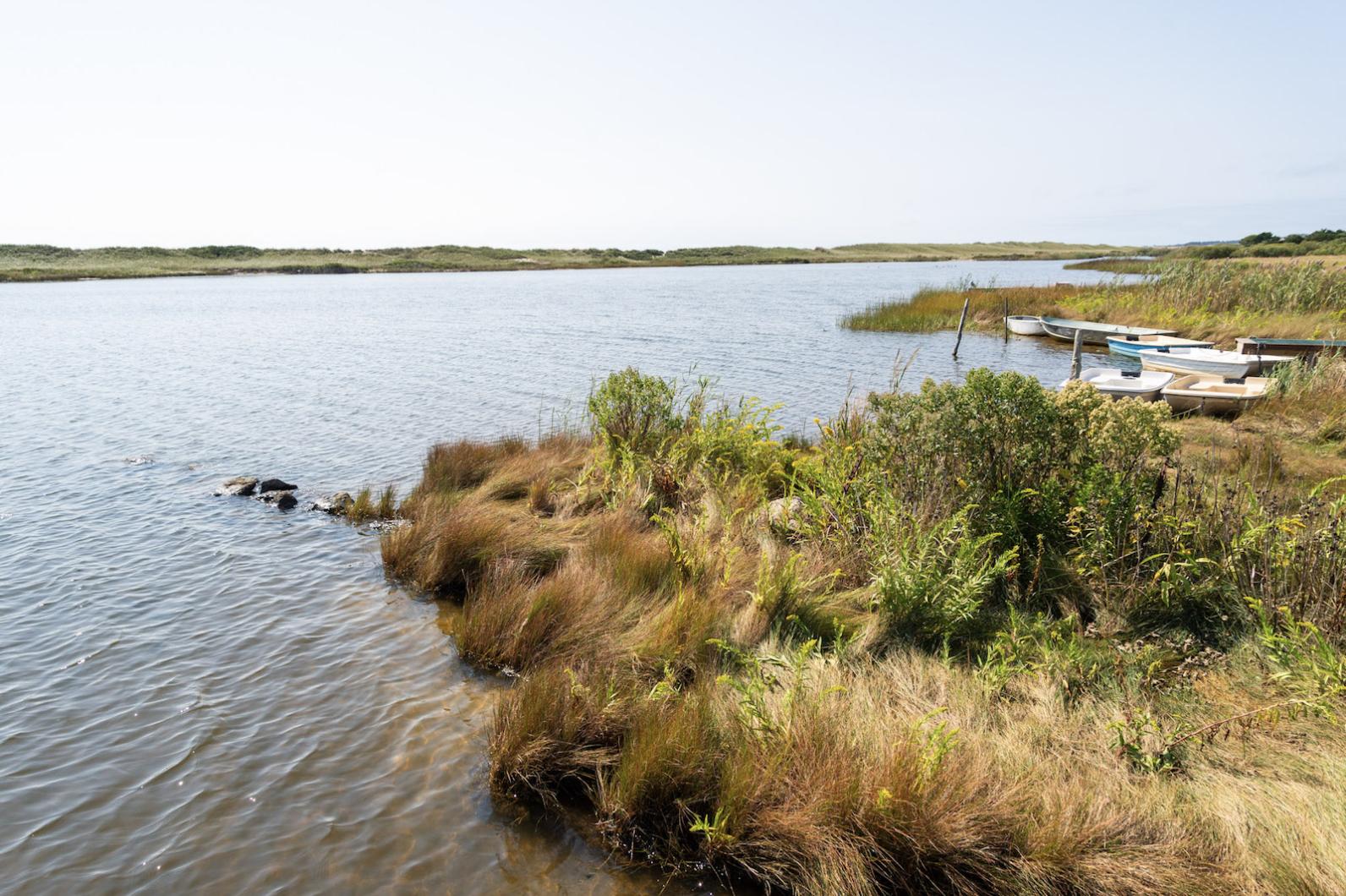The Chilmark Pond Foundation has taken a big step forward to preserve one of the Island’s most at-risk ponds.
The foundation received approvals last week for two different plans to improve water quality at Chilmark Pond, the culmination of a years-long effort to beat back cyanobacteria blooms from forming.
The town conservation commission on March 20 preliminarily signed off on a plan to put an ultrasonic buoy in the pond, which will send out sonic waves that disrupt algal buoyancy. As a result, the algae sink to the bottom away from sunlight, where it can’t perform photosynthesis and release toxins into the water.
The Chilmark Pond Foundation hopes to have the LG Sonic MPC-Buoy in place sometime in May, said Amy Salzman, an ex-officio member of the Chilmark Pond Foundation.
“We did due diligence and talked to other groups that have used it, and all of them rave about it,” she said.
The foundation had considered several different methods and went with the ultrasonic buoy due to evidence of its success and ease of installment.
“One of the nice things about this is that it’s one object floating out there like a little boat, and you leave it out, and it does its thing,” Ms. Salzman said.
Monitoring the buoy’s impact will be instantaneous, Ms. Salzman said.
“We will know every time that it feels a bloom coming on something, and we will confirm all of that with our water sampling process that we’ve been doing,” she said.
The conservation commission voted in favor of the plan, but the Chilmark Pond Foundation is still waiting for written permission, which Ms. Salzman said may be contingent on final clearance from the state’s Natural Heritage & Endangered Species Program.
The machine costs approximately $75,000 and is being paid for by the Chilmark Pond foundation.
“I hope that we’d be able to get it in before the water temperature goes up and high enough to be appropriate for the growth of sign of bacteria,” Ms. Salzman said.
Cyanobacteria blooms have been growing in the pond for years. The health of the pond started to decline in the 1980s, when human development increased. In 2014, the Massachusetts Department of Environmental Protection issued a report through its estuaries project concluding that the nitrogen levels in the pond were at their limit.
Ms. Salzman said that the buoy can also help with improving the overall health of the pond.
“Not only will it prevent cyanobacteria blooms, but it will help restore the ecological balance of the pond, which is really what the foundation is all about,” she said.
The Chilmark Pond Foundation also received a federal dredge permit last week, which has been an ongoing process since 2019.
“My hope is that we will be able to do our dredging and beach restoration work sometime between the middle of November and the end of the year,” Ms. Salzman said.
With these two methods getting underway soon, Ms. Salzman is hoping for a productive year of continuing efforts to preserve Chilmark Pond.
“When this device goes in, if it is successful, and if we get to dredge, 2025 will go down the record books for [the year of] doing good stuff,” Ms. Salzman said.







Comments (1)
Comments
Comment policy »